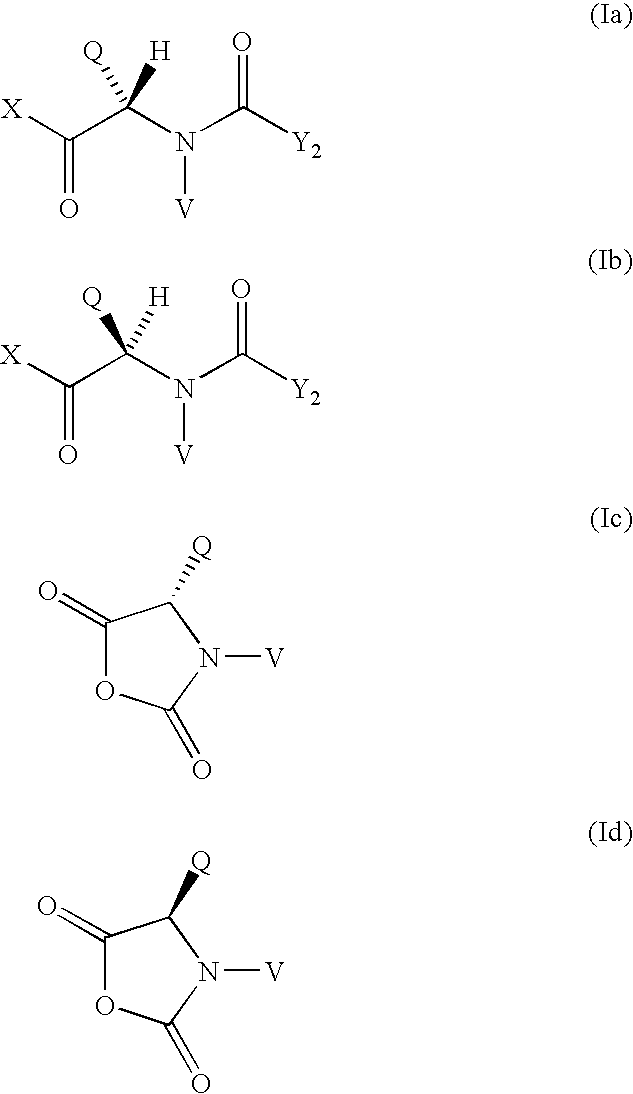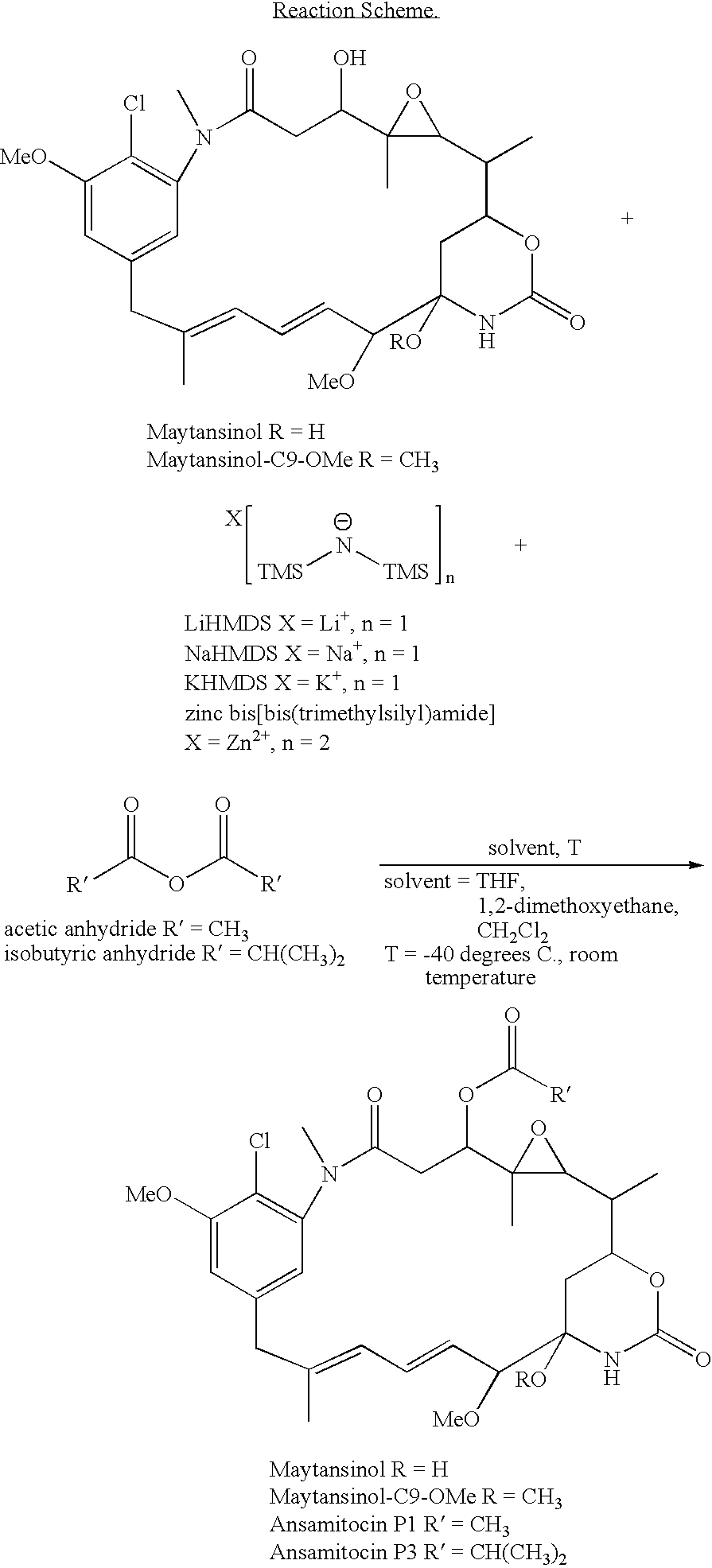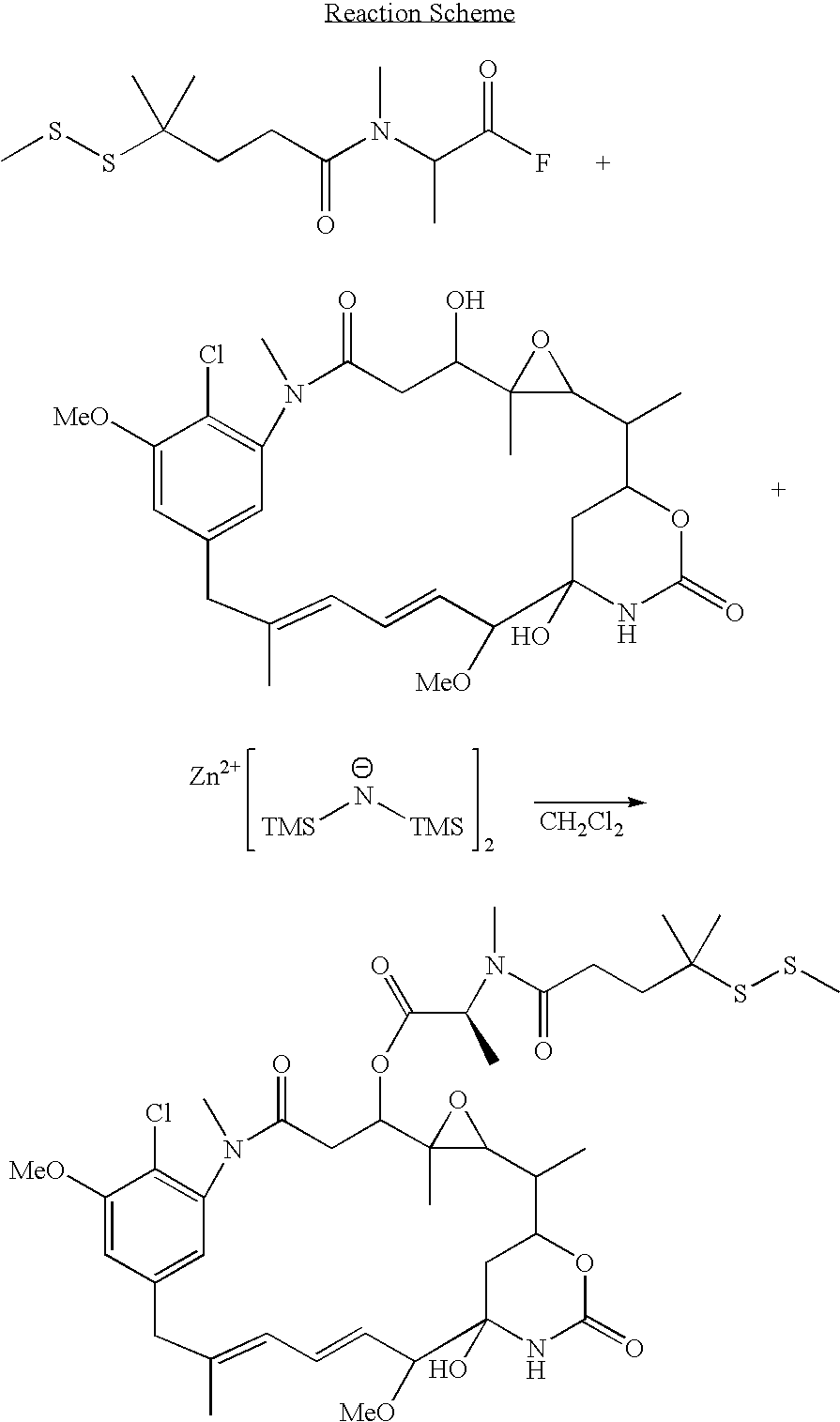Method for the preparation of maytansinoid esters
a technology of maytansinoid esters and maytansinoids, which is applied in the field of maytansinoid esters preparation, can solve the problems of cumbersome processes, moderate yields, and inability to use on an industrial scale, and achieves low cost and high yield
- Summary
- Abstract
- Description
- Claims
- Application Information
AI Technical Summary
Problems solved by technology
Method used
Image
Examples
example 1
Maytansinol Esterification with Acetic Anhydride Using Lithium Hexamethyldisilazide (LiHMDS) in Anyhydrous Tetrahydrofuran (THF)
[0050] A solution of maytansinol (25.8 mg, 0.046 mmol) in anhydrous THF (1 mL) was prepared in a round bottom flask, equipped with a stir bar and septa and placed under an argon atmosphere. The reaction vessel was cooled to −40° C. in a low form dewar flask containing dry ice and acetone. A solution of 1 M LiHMDS (9.5 mg, 0.057 mmol) in THF was added to the reaction flask dropwise via syringe and the reaction solution was allowed to stir, maintaining the temperature at −40° C. Acetic anhydride (5.6 mg, 0.055 mmol) was added after 15 minutes and the reaction was allowed to proceed, warming slowly over 2 hours. The reaction was quenched by the addition of aqueous ammonium chloride (2 mL) and the crude reaction mixture was transferred to a separatory funnel. The crude product and unreacted starting material were extracted into ethyl acetate twice (2×6 mL), th...
example 2
Maytansinol Esterification with Isobutyric Anhydride Using Lithium Hexamethyldisilazide (LiHMDS) in Anyhydrous 1,2-dimethoxyethane
[0051] A solution of maytansinol (18.6 mg, 0.033 mmol) was prepared in 1,2-dimethoxyethane (0.8 mL) in a round bottom flask, equipped with a stir bar and placed under an argon atmosphere. The reaction vessel was cooled to −40° C. in a low form dewar flask containing dry ice and acetone. A solution of 1 M LiHMDS (27.6 mg, 0.165 mmol) in anhydrous THF was added to the reaction flask dropwise via syringe and the reaction solution was allowed to stir, maintaining the temperature at −40° C. After 15 minutes, isobutyric anhydride (6.5 mg, 0.041 mmol) was added and the reaction continued to stir for an additional 2.5 hours. Analytical thin layer chromatography (Analtech Uniplate™, 2.5×10 cm, 250 micron), eluting in a mixture of methylene chloride and methanol (95:5, v / v) indicated the formation of the desired C3 isobutyryl ester. The reaction solution was coole...
example 3
Maytansinol Esterification with Isobutyric Anhydride Using Sodium Hexamethyldisilazide (NaHMDS) in Anyhydrous Tetrahydrofuran (THF)
[0052] A solution of maytansinol (14 .mg, 0.026 mmol) in anhydrous THF (0.5 mL) was prepared in a glass vial, equipped with a stir bar and septa and placed under an argon atmosphere. The reaction vessel was cooled to −40° C. in a low form dewar flask containing dry ice and acetone. A solution of 1 M NaHMDS (7.1 mg, 0.039 mmol) in THF was added to the reaction flask dropwise via syringe and the reaction solution was allowed to stir, maintaining the temperature at −40° C. Isobutyric anhydride (6.2 mg, 0.039 mmol) was added after 15 minutes and the reaction was allowed to proceed, warming slowly over 2 hours. Analytical thin layer chromatography (Analtech Uniplate™, 2.5×10 cm, 250 micron), eluting in a mixture of methylene chloride and methanol (95:5, v / v) indicated the formation of the desired C3 isobutyryl ester.
PUM
| Property | Measurement | Unit |
|---|---|---|
| temperature | aaaaa | aaaaa |
| flow rate | aaaaa | aaaaa |
| retention time | aaaaa | aaaaa |
Abstract
Description
Claims
Application Information
 Login to View More
Login to View More - R&D
- Intellectual Property
- Life Sciences
- Materials
- Tech Scout
- Unparalleled Data Quality
- Higher Quality Content
- 60% Fewer Hallucinations
Browse by: Latest US Patents, China's latest patents, Technical Efficacy Thesaurus, Application Domain, Technology Topic, Popular Technical Reports.
© 2025 PatSnap. All rights reserved.Legal|Privacy policy|Modern Slavery Act Transparency Statement|Sitemap|About US| Contact US: help@patsnap.com



